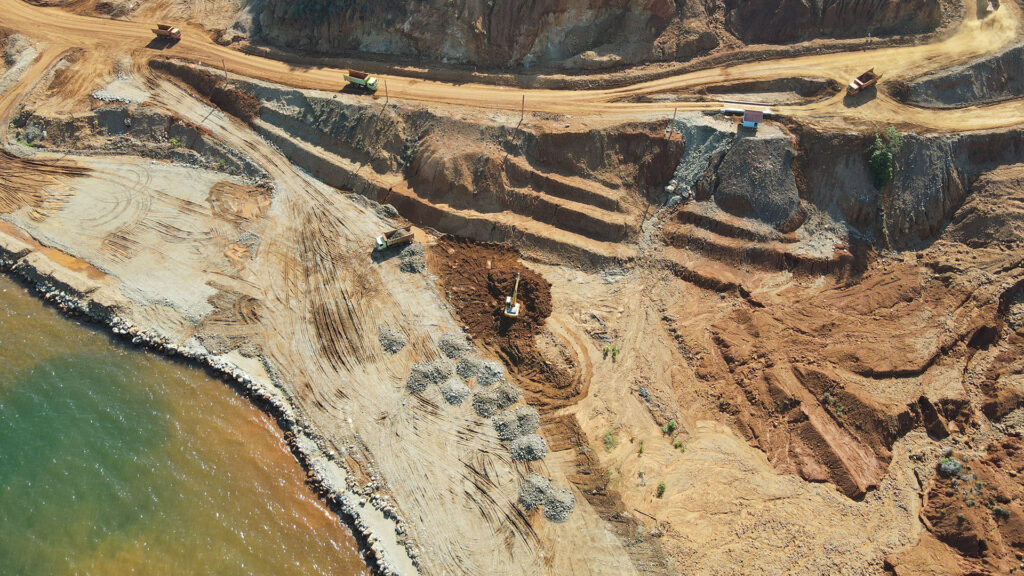
PRA Publishes Consultation on Updating the Approach of Banks and Insurers to Managing Climate-Related Risks
It is almost ten years since Mark Carney, as then Governor of the Bank of England, gave his well-known “Breaking the tragedy of the horizon” speech at Lloyd’s, and came under fire from some quarters that this was beyond his remit.
Things have changed a lot since then, and the PRA is consulting on updates to SS3/19, setting out its supervisory expectations for banks and insurers in relation to climate-related risks. The proposed update has been trailed by the PRA for quite a while. The PRA indicates that an update is needed as firms’ level of readiness to manage climate-related risks vary, and further progress is needed. The PRA also acknowledges that feedback from the industry has been that more clarity is needed on PRA expectations in this area.
The PRA notes that many insurers have embedded some form of climate-related risk appetite statement across key climate-related risks, supported by qualitative metrics and thresholds, but that risk management processes are at early stages. Current metrics often don’t allow insurers to monitor climate exposures against risk appetite.
Most insurers run several climate scenarios covering a range of risks and time horizons, but there is limited evidence that the results are used in decision making beyond inclusion in the own risk and solvency assessment (ORSA). Further, some insurers have gaps in capabilities, data and tools, meaning scenarios do not reflect the full spectrum of climate-related risks: for example, general insurers often focus on physical and litigation risk but rarely consider the impact of transition risk on underwriting or investments.
Overall, the PRA’s proposals contain expectations (rather than rules) for effective risk management practices. The consultation specifically states that the proposals are intended to give space for firms to develop innovative solutions suited to their business, as well as for them to be applied in a proportionate manner to a firm’s exposure to climate-related risk.
A summary of some of the key proposals follows.
Governance
The PRA proposes that management bodies should provide the board with relevant information on climate-related risks to help them understand the impact on the firm’s business. The board should be given training on climate-related risk, including methods and tools used by the firm, to enable them to provide effective challenge.
In addition, the board should be given analysis of the performance of the business strategy under a range of climate scenarios, and the resilience of the firm’s existing strategy given climate-related risks to its business model must be demonstrated.
The board should determine its business strategy and how it relates to climate change and transition, and the firm must be able to demonstrate how it has integrated its plan to meet any climate goals it has adopted (or is required to adopt) such as zero-emission targets, within the overall business strategy.
The board should also agree climate-specific risk appetite statements for material climate-related risks which are identified in the firm risk register (for more on which, see below).
Management responsibilities for identifying and managing climate-related risks must be assigned at an appropriate level of seniority such as a relevant SMF holder or board member with clear reporting lines.
Risk management
The PRA says that, while progress has been made on climate-related risk management, more work is required by all firms.
Firms should periodically carry out structured risk identification and assessment to identify material climate-related risks and appropriately classify all material risks in the firm risk register. As part of the overall risk identification and assessment, firms should assess the risks arising from their material relationships with clients, counterparties, investees and policyholders and assess how these interact with other climate-related risks in the firm risk register.
Further, although it is not proposing the use of specific risk metrics, the PRA indicates that firms should develop quantitative risk appetite metrics and limits for each material climate-related risk that they face.
Firms should develop internal risk reporting infrastructure to allow for reporting of climate-related risks to the board, with reporting frequency in line with risks of similar materiality.
The PRA acknowledges that climate change can give rise to operational risks that affect overall operational resilience, and firms should assess under their operational resilience policies the impact of climate-related risk drivers from the point of view of general operations and ability to continue providing critical operations. Firms should also be aware of and have suitable measures in place to assess the extent to which their operational resilience may be negatively impacted by changes in physical climate-related risk.
Climate Scenario Analysis (CSA)
This is a risk assessment tool that supplements standard scenario analysis and stress-testing toolkits used by firms to account for the specific characteristics of climate-related risks, and it is a key tool in accounting for uncertainty in climate outcomes where climate-related risks are non-linear and have no precedent.
Firms have a common challenge in using CSAs due to the complexities involved in constructing, implementing and understanding outputs, and the PRA proposes that firms’ CSAs should capture all material climate-related risks. Firms must document how the CSA fulfils their objectives and informs decision making and the importance of clear objectives for the CSA is emphasised. The PRA says that current CSA models and toolkits do not capture the full range and scale of climate-related risks and firms must use the results whilst taking account of the fact they may be exposed to greater risks, and seek to evolve their capabilities to address these limitations as CSAs develop.
Firms must select, match and tailor scenarios as relevant for objectives and use cases, and use CSA in a proportionate manner for a range of purposes, including business strategy, setting and reviewing risk appetite and risk management approaches. Reverse stress tests must be included.
Data
Data gaps are a significant challenge in the management of climate-related risks. Where these are identified and can be remedied by investment in data tools, frameworks and capabilities, firms should have in place strategic plans to close the gaps. Where such tools are not available, firms should use contingency solutions with appropriately conservative assumptions and proxies.
Most firms rely on externally supplied data, and they must have an effective system of governance to oversee and integrate the data which they receive, and must plan strategic development of in-house capabilities over the short and long term. Firms must have in place systems to collect and aggregate climate-related risk data with processes to ensure that they are accurate and reliable in line with proportionality.
Disclosures
The PRA is not proposing to make substantive changes to expectations on disclosures, as it is aware that a proliferation of new disclosure requirements by multiple regulators could lead to strain and undermine the quality of disclosure. The UK Government has established a framework to create UK Sustainability Reporting Standards (SRS) based on International Sustainability Standards Board (ISSB) standards. When this process is sufficiently advanced, the FCA intends to consult on amending existing disclosure rules to move from TCFD recommendations to UK SRS for UK-listed companies. The PRA proposes to remove reference to TCFD recommendations and add a reference to UK SRS, subject to that process.
Insurance specific issues
The PRA has noted that insurers sometimes underestimate the impact of climate change, and therefore the PRA proposes to clarify its expectations for the risk management framework for insurers (such as impact on technical provisions and assets). It also proposes that ORSAs should include climate scenarios when climate-related risks are material. The PRA will clarify that it expects insurers to detail investment and underwriting changes they would make in response to climate risk and the metrics and indicators that they would monitor to inform those decisions and their timing.
The PRA also proposes that Solvency Capital Requirements (SCRs) should reflect the impact of climate-related risks on underwriting, reserving, market, credit and operational risks where relevant. The proposal aims to ensure that capital requirements do not underestimate the impact of climate-related risks over the time horizon of risks captured in the SCR, but no new capital requirements beyond the PRA’s Solvency II SCR are being imposed.
Finally, the PRA has observed that insurers’ valuations of assets and liabilities are not always consistent regarding climate risk. The PRA therefore proposes to clarify expectations of assets and liabilities to include climate-related considerations.
Conclusion
The PRA seeks responses by 30 July 2025.











